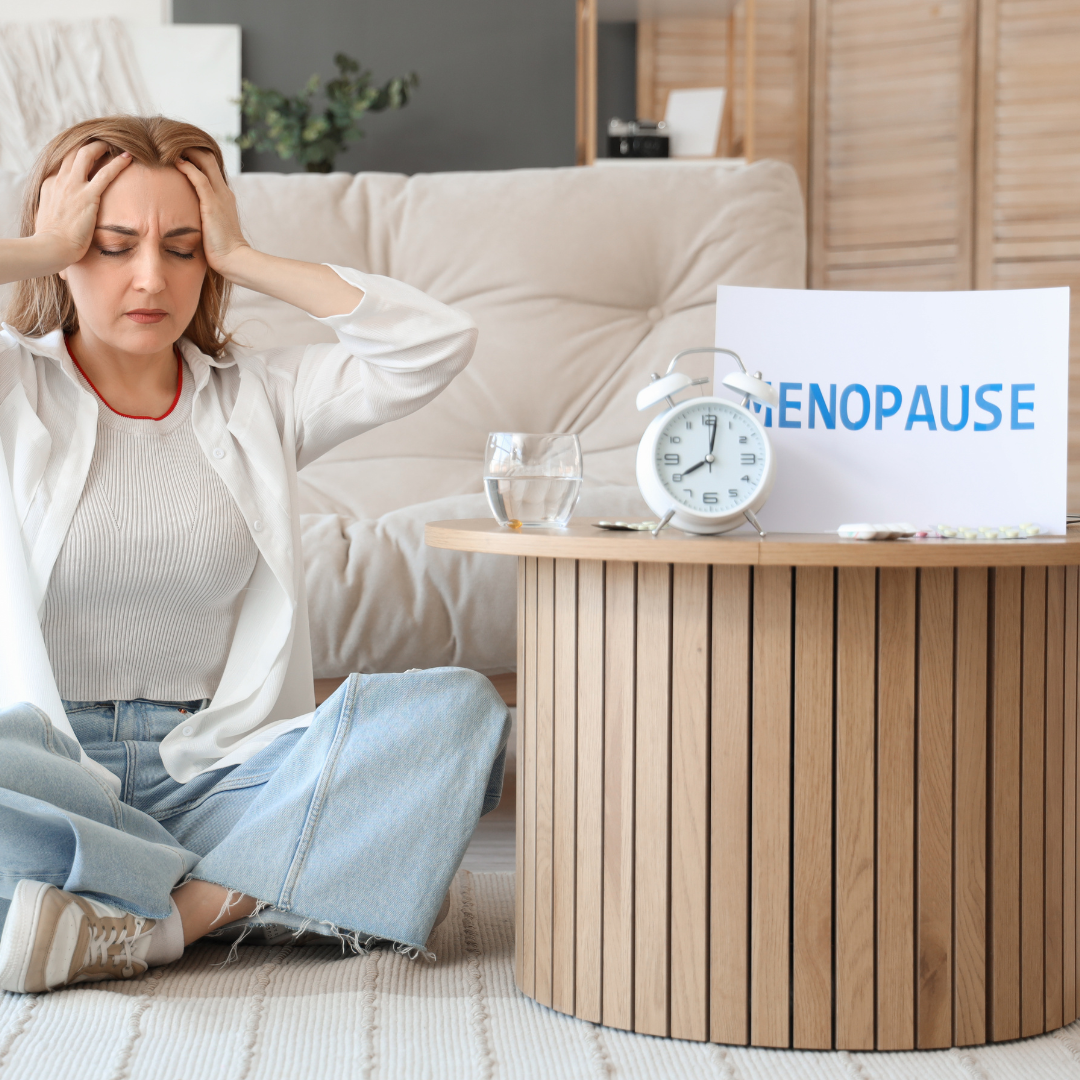
What Are The 34 Symptoms of Perimenopause?
There’s a heap of information out there about menopause symptoms, but where’s the love for perimenopause? We’re here to answer the question: what are the 34 symptoms of perimenopause?
From perimenopause and anxiety to the link between insomnia and perimenopause, we’ll explore all of the symptoms linked with perimenopause.
Before we begin, though, it’s important to know that you’re unlikely to experience all 34 symptoms. Every woman is different and their journey throughout perimenopause and menopause itself is unique.
So, with that in mind, let’s dive in.
Last Updated:
What is perimenopause?
Perimenopause is a transition period. It’s the “B” in the A-C from before menopause (pre-menopause) to menopause itself.
At this point, it’s common to start feeling some of the symptoms we often associate with menopause. However, these are also perimenopause symptoms.
Perimenopause vs menopause
What exactly is the difference between perimenopause and menopause?
Perimenopause means “around menopause.” The most important difference between perimenopause and menopause is your menstrual cycle.
While you’re in perimenopause, you’ll still be getting periods, even if they are irregular. Therefore, you’re still in your reproductive years.
While your hormones are changing and your periods start to differ from what you were used to, you’re not menopausal yet.
Menopause happens when you have not had a period (or any vaginal bleeding, including spotting) for at least 12 months in a row.
Even if you haven’t had any bleeding for 11 months and then you start spotting, the timer resets, and you need to wait another 12 months until you can officially be in the menopause.
When perimenopause occurs
Everyone is different, but for the vast majority of women, perimenopause happens for a good 8 to 10 years before you reach full blown menopause.
Usually, this happens in your mid to late 30’s or 40’s, but it can even start before this.
Why does perimenopause happen?
Perimenopause happens because of the changes to your hormones.
As your oestrogen levels drop, your reproductive years start wrapping up for closure.
Oestrogen is the main female hormone that your ovaries produce, and this imbalance is responsible for a whole heap of your perimenopause symptoms.
What are the 34 symptoms of perimenopause and what can you do about them?
Many people are able to list off a bunch of menopause symptoms, such as hot flashes, weight gain and low sex drive. However, a large number of women don’t realise that these often start in perimenopause.
Plus, they also don’t recognise that there are a lot more than the famous symptoms.
So, let’s answer what are the 34 symptoms of perimenopause so you can understand the transition, why these symptoms happen and what you can do about them.
1. Perimenopause and hot flashes
You may think that hot flashes are only a menopause symptom, but they’re super common in perimenopause, too. In fact, hot flashes are one of the most common symptoms.
Hot flashes feel like a sudden hotness, accompanied by sweating and reddening of your skin. Flushed skin is most noticeable in the chest, neck and face.
Some women experience cold sweats directly after a hot sweat, making it feel almost fever-like.
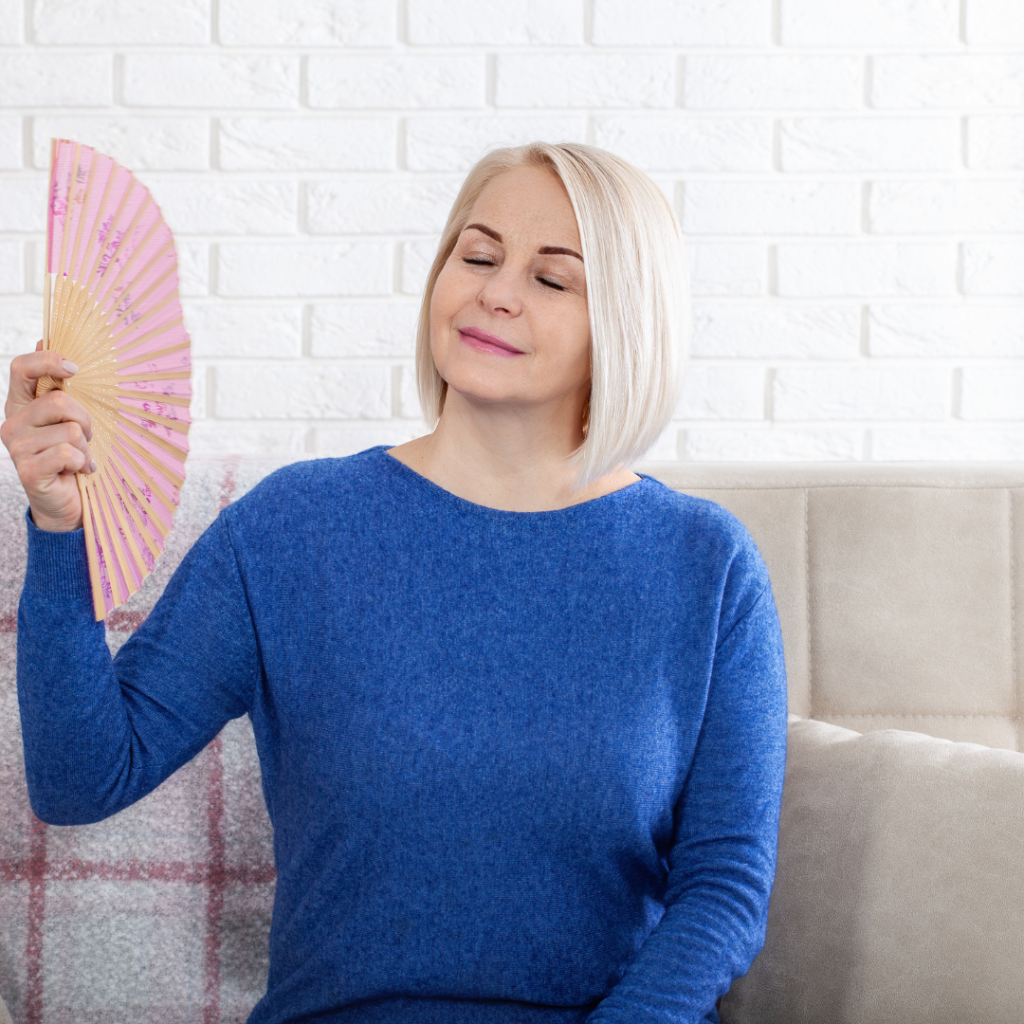
2. Perimenopause night sweats
Hot flashes that occur in the night are called night sweats. Perimenopause night sweats can cause huge sleep disruption, waking you from your sleep or preventing you from falling asleep in the first place.
Night sweats are a prime reason why perimenopause and fatigue are often linked.
Scientists aren’t 100% sure why night sweats happen, but it looks like the falling levels of oestrogen disrupt your body’s temperature control (the hypothalamus).
3. Perimenopause and anxiety
Perimenopause and anxiety is more common than you might think. In fact, a study in Brazil discovered that a huge 58% of women aged between 44 and 55 who were perimenopausal displayed symptoms of anxiety.
Perimenopause anxiety is often due to the change in hormone levels – specifically the decline of oestrogen.
That said, there are other changes that could contribute towards perimenopause and anxiety. For example, if experiencing insomnia and perimenopause, a lack of sleep can heighten anxious dispositions and feelings of panic.
With 40-50% of women experiencing perimenopause and fatigue at the same time, exhaustion can lead to anxiety. In turn, anxiety can lead to disrupted sleep. So, perimenopause and anxiety can truly become a vicious cycle.
4. Irregular periods and changes to your menstrual cycle in perimenopause
Changes to your periods are generally the first signals towards being in perimenopause.
As you transition to the menopause, your menstrual cycle will change. This can be in length, space between periods, flow and even blood colour.
Learn everything you need to know about perimenopausal periods with my Perimenopause Menstruation article.
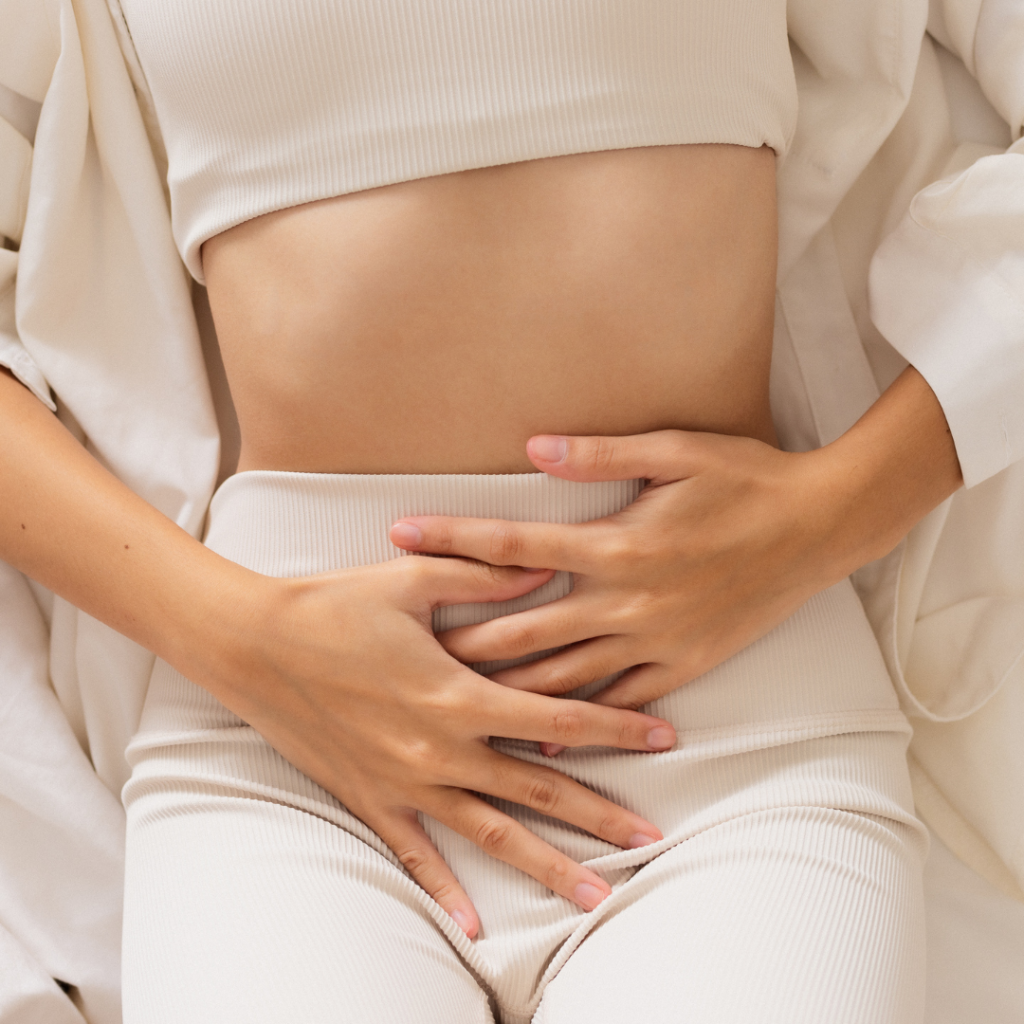
5. Perimenopause and mood swings
Perimenopause and anxiety can worsen this, but realistically, mood swings are such a common symptom at this point in your life.
It’s not unusual to feel a burst of sudden sadness or anger. There’s a reason why so many people feel intense anger toward their partner or spouse just because they breathed a little louder than usual. You’re not alone.
As your oestrogen levels drop, all your other hormones are knocked off balance. Serotonin and norepinephrine – two hormones that are linked to depression – might be affected when this happens, which can cause mood swings.
Let’s also remember that perimenopause brings with it a lot of other symptoms. Dealing with constant sleep disturbance and even perimenopause itchy skin can lead to emotional distress. It’s really no wonder that your moods are like a loop-the-loop on – well – a loop.
6. Perimenopause and low sex drive
Perimenopause and low sex drive is usually the direct consequence of the lower levels of testosterone and oestrogen. In combination, this makes arousal much trickier, which is why perimenopause and low sex drive are linked.
Let’s also remember, though, that vaginal dryness can contribute towards a decreased libido in perimenopause. This can, if left untreated, cause penetration to feel painful. Our brains protect us from this pain by lowering sex drive.
7. Breast tenderness in perimenopause
Breast soreness is another symptom of perimenopause that’s pretty common. The good news is that breast tenderness does tend to get better with time.
Tender and sore breasts – also known as mastalgia – is also common during menstruation, so you may have already dealt with this before. The reason why is down to the changes in hormones which then causes fluid to build up in your breasts. The result is swollen, tender and sore boobs.
In perimenopause, these changes to your hormones are much more drastic and pronounced. So, not only can you feel breast tenderness, you may also see a change to your breasts’ physical appearance, including the size and shape.
If you have experienced breast tenderness on your period before, you may notice that the breast pain during perimenopause feels different. Rather than a dull ache which we often feel during menstruation, breast pain in perimenopause might include burning or throbbing.
If you are post-menopausal and experiencing breast pain, make sure you go to the doctor. It’s not common at this stage and you shouldn’t assume it’s due to hormone changes.
8. Vaginal dryness and perimenopause
Dryness, vaginal itching and perimenopause are seen so frequently together. It’s like the worst golden trio ever.
As oestrogen levels fluctuate and drop, your vaginal health may be impacted.
Part of your female sex hormones’ responsibilities is to promote blood circulation around the vagina. This helps with natural lubrication.
So, when the oestrogen levels change and lessen, blood circulation is impacted and so is moisture. The result is dryness, which can lead to itching and – in extreme cases – bleeding.
This vaginal dryness can lead to discomfort and frustration. Plus, it can cause pain during sex in perimenopause, which can impact your physical and mental health.

9. Headaches during perimenopause
Some women who are going through perimenopause may experience frequent headaches or migraines. Again, you can blame the decline of oestrogen levels. (Are you picking up on a pattern here?)
If you get headaches before your period, this is fairly similar. The difference, though, is that you can’t predict it. Hormone changes in perimenopause can fluctuate randomly, unlike your menstrual cycle which you can accurately chart and prepare for.
10. Frequent urinary tract infections
If you’re having recurrent urinary tract infections (UTIs), don’t panic. It is frustrating, but fairly common in perimenopause.
As your oestrogen levels drop, your vaginal tissues start to thin out. This leads to vaginal dryness and irritation, which is a great breeding ground for UTIs.
UTIs are deemed “recurrent” if you’ve had three or more in one year, or more than two UTIs within 6 months.
Make sure you stay hydrated with both water and cranberry juice. Water will help with hydration and lubricating the vagina, while cranberry juice contain PACs, which work to prevent UTIs.
11. Changes to taste in perimenopause
A change in taste in perimenopause is less common than other perimenopause symptoms on this list. However, it can happen.
Sometimes, tastes become stronger during perimenopause and menopause.
On top of this, you might also find your mouth feels dry. Make sure you speak with your doctor about this, because a dry mouth can lead to a higher risk of gum disease or cavities.
12. Insomnia and perimenopause
Sleep is so important for everyday wellbeing. While it is common that insomnia and perimenopause are linked, it can be very frustrating and absolutely exhausting to deal with.
Insomnia and perimenopause are tied together because of a range of other symptoms: anxiety, night sweats, headaches and muscle tension to say the least.
13. Burning mouth in perimenopause
Because of hormonal changes, a burning mouth is a perimenopause symptom. While a burning mouth isn’t as common as some of our other perimenopause symptoms on this list, it’s not unheard of.
Burning mouth may feel like a spread of heat, numbing, tenderness, tingling or burning in or around the mouth.
This happens because the hormones in the mouth responsible for mucus have sex hormone receptors. These hormones will decline when your oestrogen levels lower, contributing towards discomfort and pain.
14. Acne and perimenopause
While we hoped that we could leave acne in our teenage years, many women see a resurgance in perimenopause. Even if their skin was flawless throughout their entire life, it’s common to see acne throughout the transition to menopause.
During perimenopause, skin becomes thinner and dryer. That’s why acne treatments aren’t usually recommended for perimenopausal skin problems.
Instead, you should opt for products that contain salicylic acid and using a moisturiser with natural ingredients.
15. Changes to digestion in perimenopause
Weight gain is directly correlated to perimenopause, and this could be down to digestive changes in the body.
Female sex hormones will impact the microbes in your mouth and digestive tract. So, in perimenopause, gut flora will change in composition.
This essentially means that you’ll notice changes in the way you digest your food and you might even react differently to ingredients you haven’t had a problem with up until now.
It’s important to keep track of what you’re eating and how each meal is impacting your symptoms.
16. Perimenopause and menopause joint pain
Many women find that perimenopause and menopause joint pain are intertwined. Joint pain is an extremely common side effect of both the menopause and perimenopause.
Oestrogen works to help reduce inflammation and keep your joints well lubricated. So, when your oestrogen levels decline, inflammation may not be fixed and your joints become dry. That’s why menopausal arthritis is so common.
When it comes to perimenopause and menopause joint pain, it’s best to book an appointment with your doctor. In the mean time, ibuprofen can help manage the pain. Ice packs and elevating the area will also help with perimenopause and menopause joint pain.
17. Perimenopause itchy skin
Perimenopause itchy skin is all down to collagen production and skin hydration, which is controlled by oestrogen.
As your oestrogen levels lower, you may find that you experience perimenopause itchy skin and dryness.
This is the same reason why you experience vaginal dryness and itching around the vulva, but it can spread to other places, too.
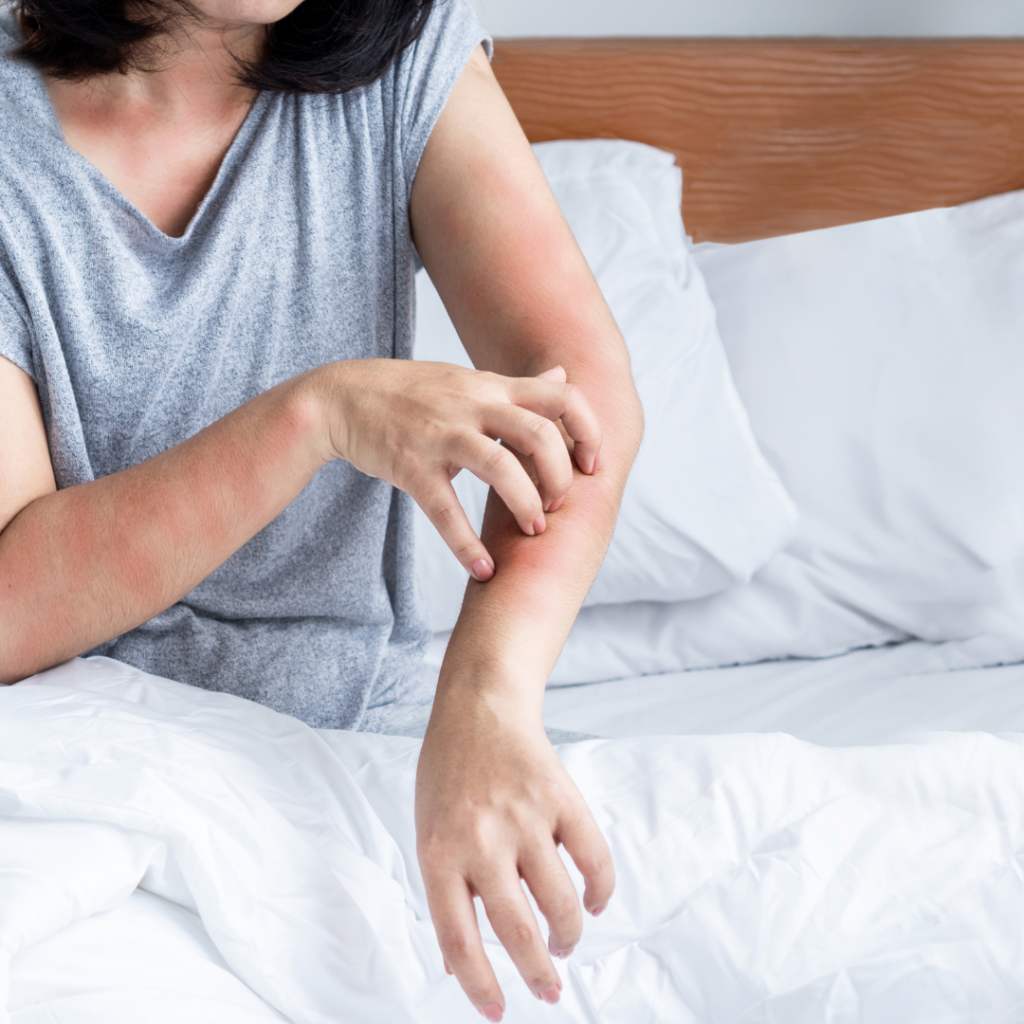
18. Muscle aches and tension during perimenopause
Just like perimenopause joint pain, it is common to feel muscle aches and tension at this point in your life.
Make use of a hot water bottle if you can manage it (though if you suffer from hot flashes frequently, swap it out for an ice pack). This is also a great excuse to ask someone you care about for a massage – professional or amateur!
19. Feeling electric shocks in perimenopause
Though this isn’t overly common, some women get electric shock sensations in perimenopause and menopause.
There has been no real reason for this that has been discovered yet, but it is almost certainly due to the change of hormone levels in your nervous system.
20. Perimenopause and fatigue
Perimenopause and fatigue often come hand in hand. For people who have never been through perimenopause, this may be brushed off as “she’s just a bit tired.”
That is a huge understatement.
Perimenopause and fatigue can actually be debilitating for many women. It can cause other symptoms to worsen, such as hot flashes, anxiety and even insomnia.
Menopause and perimenopause fatigue often occurs because of disrupted sleep through night sweats, panic or other perimenopausal symptoms.
21. Struggling to focus in perimenopause
If you are finding it difficult to concentrate during perimenopause, you are not alone. This often leads to the infamous “brain fog” that we often associate with menopause, though it does start in perimenopause.
Declining oestrogen can cause our minds to feel foggy and make it tricky for us to focus. Additional hot flashes and sleep disturbances may contribute to this, too.
22. Memory lapses during perimenopause
Forgetting things in perimenopause is common and this is due to the same reasons why you may struggle to stay focused.
As with concentration problems in perimenopause, memory issues tend to stem from lower oestrogen levels, perimenopause and fatigue and general anxiety.
23. Perimenopause hair loss and thinning
Thinning hair or hair loss can cause a lot of emotional distress for women, as we have such a strong connection with our hair.
During perimenopause, it is common to see our hair falling out, thinning overall and becoming visibly dehydrated.
Hair problems in perimenopause and menopause is, again, due to the shifts of ovarian hormonal fluctuations.
As your oestrogen levels change, your hair follicles narrow and shrink. In turn, your hair grows at a slower rate than before and will shed more frequently.
24. Nails more prone to breakage and thinning during perimenopause
Brittle nails can happen because your body might not be producing enough keratin, which is responsible for making sure your nails stay strong and durable.
A lack of keratin production is, unfortunately, considered pretty normal during perimenopause and menopause.
25. Perimenopause bloating and weight gain
Weight gain and perimenopause bloating can happen due to the changes in your digestive system at this time.
There are a number of reasons why weight gain can happen in perimenopause and menopause. Lowering levels of oestrogen can make weight control difficult. On top of this, all the other perimenopause symptoms can make exercise difficult to even think about, let alone do.
Additionally, intense mood swings and perimenopause anxiety can lead to different eating habits, resulting in perimenopause bloating and weight gain in the long run.
26. Needing to pee more often in perimenopause
Also known as “stress incontinence,” needing to pee suddenly and frequently in perimenopause is a pretty common side effect of lowering oestrogen levels.
An “overactive bladder” becomes so because your bladder and pelvic muscles can weaken due to the fall of hormone levels.
27. Perimenopause dizzy spells
Dizziness is often a byproduct for when perimenopause and anxiety meet. In 2018, a study found that dizziness is actually one of the more common symptoms of menopause. That said, there’s no real known reason why.
It’s worth noting that this study, which focused on 470 women, found that the dizzy spells were often connected with symptoms of anxiety.
28. Developing osteoporosis in perimenopause
A loss of bone density during perimenopause is not unusual and is because of the lower levels of oestrogen produced.
In the more severe cases, though, this loss of bone density can lead to osteoporosis. Osteoporosis causes your bones to become fragile and more prone to breakage.
29. Developing new allergies in perimenopause
Some women find that they are developing brand new allergies when they reach perimenopause and menopause. They may also report that existing allergies worsen at this time.
The reason is because, throughout perimenopause and menopause, women can have spikes in histamine, which is the property that creates allergic reactions.
30. Irregular heart beat due to perimenopause
Anything to do with your heart should be discussed with a doctor. It simply isn’t worth the risk.
If you have noticed an irregular heart beat or palpitations during perimenopause and menopause, this could be due to the transition period.
Again, though, please book an appointment with a professional healthcare provider for a full assessment and treatment.
31. Perimenopause triggering tinnitus
While there’s no exact understanding between perimenopause and tinnitus, a study in 2018 demonstrated that women going through menopause were more likely to experience tinnitus.
Tinnitus is when you hear a sound without any cause for it, such as:
- Ringing in your ears
- Roaring
- Buzzing
- Whistling
- Humming
- Hissing
- Clicking
- Squealing
Some women also report having itchy ears in perimenopause and menopause. Hormones truly do affect the whole body!
32. General irritability and anger because of perimenopause
Due to the vast number of potential perimenopause symptoms and the impact they can each have upon daily life, it’s hardly surprising that many women feel irritable and sudden to anger.
Stress, sleep disruption and anxiety all work in tandem to make you feel down in the dumps.
That is why it’s so important to prioritise emotional and mental health during perimenopause and menopause.
33. Perimenopause and depression
For some women, having to handle many of these symptoms while trying to live a normal life can cause a plummet to your mental health.
At this point in your life, you may also be trying to handle a number of different life changes, too. When these changes crop up and you need to deal with them as well as a bunch of physical symptoms of side effects, it can be extremely challenging to manage.
As a result, there is – unfortunately – a common tie between perimenopause and depression, just as there is a link between perimenopause and anxiety.
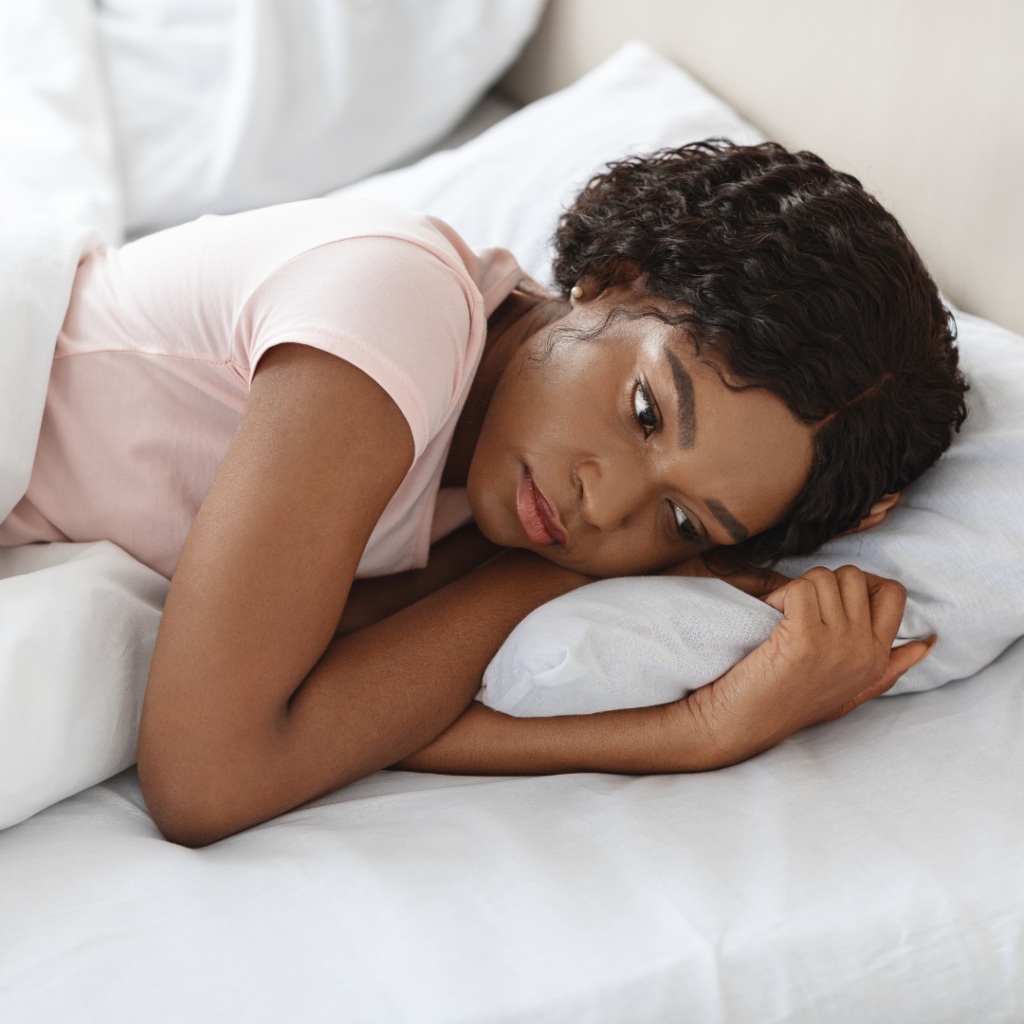
34. Perimenopause and panic attacks
Some women experience panic attacks during menopause and perimenopause. These panic attacks can occur suddenly and sometimes, it can seem, without a trigger, making them difficult to handle.
When these panic attacks happen, the shock of them can spark a panic disorder.
Panic attacks often happen in perimenopause due to the changes to your hormones or simply the daunting nature of waiting for a panic attack to happen, because you can’t predict them.
What are the 34 symptoms of perimenopause? – in a nutshell
From hot flashes and night sweats to panic attacks and anxiety, learning the answer to what are the 34 symptoms of perimenopause can be daunting. It is so important to remember that you are seriously unlikely to experience every single symptom on this list.
That said, even if you did, there is perimenopause and menopause help out there for you. Changes to your lifestyle and diet can make a huge amount of difference.
It’s important to be open and communicate with the people you trust, as they want to support you throughout this transition.
Most importantly, though, if you are struggling with one, two, ten or even thirty of these symptoms and you feel like you can’t cope, you should see your doctor.
There is nothing embarrassing about asking for help when it comes to perimenopause symptoms and the monumental impact they can have on daily living.
So, whether you’re struggling with perimenopause and joint pain, perimenopause and low sex drive, hot flashes or anything in between, make sure you get the help you need.
In the mean time, take comfort in knowing that you are not alone. Right now, there are thousands of women feeling the same way. Just remember, perimenopause doesn’t last forever.
Leave a Reply
- free ebook alert -
WHAT TO EXPECT WHEN YOU’RE
going through the menopause
Demystify your understanding of what’s happening to you. Arm yourself with solid, game-changing information to support you through this challenging phase of your life.
grab your copy now →
WHAT TO EXPECT WHEN YOU’RE
going through the menopause
This was such a helpful read. It’s comforting to know that so many of these symptoms are common and part of the process. I’ve also found SheMed’s blogs about menopause really useful when I wanted to understand things in simple words. Feels good to know we’re not alone in this journey.